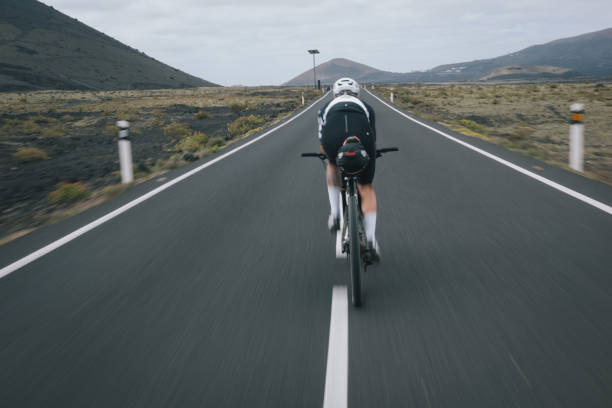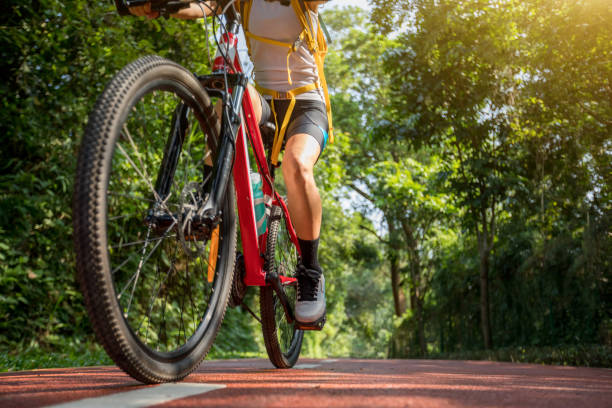Types of Bikepacking Trips
This post contains affiliate links. This means I will make a commission at no extra cost to you should you click through and make a purchase. Read the full disclosure here.
Introduction to Bikepacking
Bikepacking is a versatile and adventurous activity that combines cycling and backpacking, allowing enthusiasts to explore diverse landscapes while carrying all their essential gear. The beauty of bikepacking lies in its flexibility, offering various types of trips to suit different preferences, skill levels, and terrains. In this article, we will explore the different types of bikepacking trips, highlighting the unique experiences each type offers.
| Key Takeaways | Summary |
|---|---|
| Overnight Bikepacking Trips | Short, low-commitment trips perfect for beginners, requiring minimal gear. |
| Weekend Bikepacking Trips | Two to three-day trips offering extended exploration and a mini-vacation feel. |
| Multi-Day Bikepacking Trips | Four or more days, offering deep immersion and skill development with a need for careful planning. |
| Bikepacking Races and Events | Organized challenges that test endurance and self-sufficiency, fostering camaraderie and achievement. |
| Bikepacking with a Purpose | Incorporates specific goals like environmental conservation, cultural exploration, or personal challenges. |
| Bikepacking with Family | Family-friendly trips that promote quality time, education, and a healthy lifestyle. |
| Solo Bikepacking | Offers self-reliance, personal reflection, and a flexible itinerary, requiring careful planning. |
Overnight Bikepacking Trips

Definition and Overview
Overnight bikepacking trips, also known as “S24O” (Sub-24-Hour Overnight), are short adventures that typically last one night. These trips are perfect for beginners or those with limited time, providing a taste of bikepacking without the commitment of a multi-day journey.
Benefits of Overnight Trips
- Low Commitment: Ideal for those new to bikepacking or with busy schedules.
- Minimal Gear: Requires less gear compared to longer trips, making it easier to pack and prepare.
- Quick Getaway: Offers a quick escape from daily routines and a chance to reconnect with nature.
Popular Routes
- Local Trails: Explore nearby parks, forests, or nature reserves.
- Rail Trails: Utilize converted railway lines for a scenic and relatively flat ride.
- Campgrounds: Plan a route to a local campground for a convenient overnight stay.
Weekend Bikepacking Trips

Definition and Overview
Weekend bikepacking trips typically span two to three days, offering a more immersive experience than overnight trips. These adventures are perfect for those looking to explore further afield and experience a deeper connection with the outdoors.
Benefits of Weekend Trips
- Extended Exploration: Allows for more time to explore and enjoy the surroundings.
- Moderate Gear: Requires a manageable amount of gear, balancing comfort and convenience.
- Recharge and Refresh: Provides a mini-vacation to recharge and refresh the mind and body.
Popular Routes
- National Parks: Explore the beauty of national parks and protected areas.
- Mountain Trails: Challenge yourself with rugged mountain trails and breathtaking vistas.
- Coastal Routes: Enjoy scenic coastal rides with opportunities for beach camping.
Multi-Day Bikepacking Trips

Definition and Overview
Multi-day bikepacking trips, also known as “bikepacking expeditions,” typically last four or more days. These adventures require careful planning and preparation, offering a truly immersive experience in nature and self-sufficiency.
Benefits of Multi-Day Trips
- Deep Immersion: Provides an opportunity to fully immerse yourself in the journey and the environment.
- Skill Development: Enhances navigation, camping, and self-sufficiency skills.
- Personal Growth: Challenges physical and mental limits, fostering resilience and personal growth.
Popular Routes
- Long-Distance Trails: Tackle renowned long-distance trails like the Great Divide Mountain Bike Route.
- Transcontinental Rides: Embark on epic transcontinental journeys, such as crossing a continent from coast to coast.
- Remote Wilderness: Explore remote wilderness areas with minimal human presence for a true adventure.
Bikepacking Races and Events

Definition and Overview
Bikepacking races and events are organized challenges that test participants’ endurance, navigation, and self-sufficiency. These events range from single-day races to multi-week expeditions, attracting competitive cyclists and adventure seekers alike.
Benefits of Races and Events
- Camaraderie: Join a community of like-minded individuals and share the experience with fellow participants.
- Challenge and Achievement: Push your limits and achieve personal milestones in a competitive setting.
- Structured Adventure: Benefit from organized routes, checkpoints, and support systems.
Popular Events
- Tour Divide: A grueling race along the Great Divide Mountain Bike Route, spanning over 2,700 miles.
- Arizona Trail Race: A challenging race through the diverse landscapes of Arizona, covering over 800 miles.
- Transcontinental Race: An unsupported race across Europe, testing endurance and navigation skills.
Bikepacking with a Purpose
Definition and Overview
Bikepacking with a purpose involves incorporating specific goals or missions into the journey. These trips can focus on environmental conservation, cultural exploration, or personal challenges, adding an extra layer of meaning to the adventure.
Benefits of Purposeful Trips
- Meaningful Experience: Adds depth and significance to the journey, creating lasting memories.
- Positive Impact: Contribute to environmental conservation, cultural preservation, or personal growth.
- Unique Perspective: Gain a unique perspective on the world and your place within it.
Popular Purposes
- Environmental Conservation: Participate in conservation projects or raise awareness for environmental causes.
- Cultural Exploration: Immerse yourself in local cultures, traditions, and communities along the route.
- Personal Challenges: Set personal goals, such as overcoming a fear, achieving a fitness milestone, or completing a specific route.
Bikepacking with Family

Definition and Overview
Bikepacking with family involves planning trips that are suitable for all family members, including children. These trips focus on creating a fun and educational experience for everyone, with routes and activities tailored to the family’s abilities and interests.
Benefits of Family Bikepacking
- Quality Time: Spend meaningful time together as a family, away from the distractions of daily life.
- Educational Opportunities: Teach children about nature, navigation, and self-sufficiency in a hands-on environment.
- Healthy Lifestyle: Promote physical activity and a love for the outdoors among family members.
Tips for Family Bikepacking
- Choose Kid-Friendly Routes: Opt for routes with manageable distances, gentle terrains, and interesting stops along the way.
- Pack Wisely: Bring essential gear for comfort and safety, including child-specific equipment like trailers or tag-along bikes.
- Plan Fun Activities: Incorporate activities such as wildlife spotting, stargazing, or visiting local attractions to keep children engaged.
Solo Bikepacking

Definition and Overview
Solo bikepacking involves embarking on a bikepacking adventure alone, offering a unique opportunity for self-discovery and personal growth. These trips require careful planning and self-reliance, providing a deeply introspective experience.
Benefits of Solo Bikepacking
- Self-Reliance: Develop self-sufficiency and problem-solving skills by relying solely on yourself.
- Personal Reflection: Enjoy solitude and the chance for introspection, away from the distractions of everyday life.
- Flexible Itinerary: Set your own pace and make spontaneous decisions without the need to coordinate with others.
Safety Tips for Solo Bikepacking
- Inform Others: Share your route and itinerary with a trusted friend or family member.
- Carry Safety Gear: Bring essential safety gear, including a first aid kit, emergency contact device, and repair tools.
- Stay Aware: Be mindful of your surroundings and trust your instincts when it comes to safety and decision-making.

Conclusion
Bikepacking offers a diverse range of trip types, each providing unique experiences and benefits. Whether you’re seeking a quick overnight escape, a challenging multi-day expedition, or a purposeful journey with family or solo, there’s a bikepacking adventure to suit every preference and skill level. Embrace the freedom, flexibility, and connection with nature that bikepacking provides, and discover the endless possibilities that await on two wheels.
Frequently Asked Questions (FAQ)
1. What is bikepacking?
Bikepacking is a combination of cycling and backpacking, where individuals travel long distances on bicycles while carrying all necessary gear. It emphasizes off-road routes and lightweight equipment, allowing for exploration of remote areas and rugged terrains.
2. What type of bike is best for bikepacking?
The best bike for bikepacking depends on the terrain and personal preferences. Common choices include mountain bikes, gravel bikes, and fat bikes, each offering unique advantages for different types of routes.
3. How do I plan a bikepacking trip?
Planning a bikepacking trip involves selecting a route, preparing gear, and considering factors such as distance, terrain, weather, and resupply points. Researching and mapping out the route, packing essential gear, and ensuring physical readiness are key steps in trip planning.
4. What gear do I need for bikepacking?
Essential bikepacking gear includes a suitable bike, bikepacking bags (frame bags, handlebar bags, seat bags), camping gear (tent, sleeping bag, sleeping pad), clothing, food, water, navigation tools, and safety equipment.
5. Is bikepacking safe?
Bikepacking can be safe with proper planning and precautions. Key safety measures include informing others of your route, carrying essential safety gear, staying aware of your surroundings, and being prepared for emergencies.








